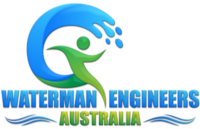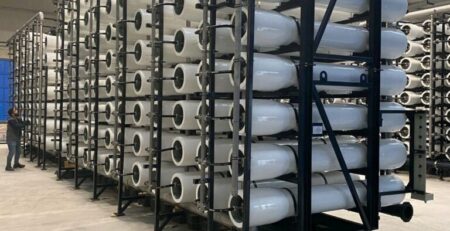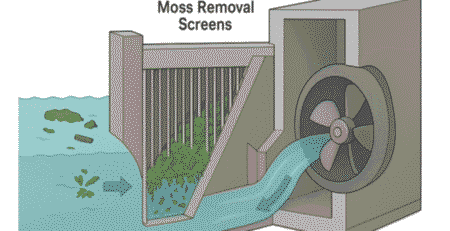Usage of IoT in Water Treatment Plants in Artificial Intelligence Usage
Usage of IoT in Water Treatment Plants in Artificial Intelligence Usage
Introduction
Water treatment plants (WTPs) are essential for providing clean and safe drinking water and for treating wastewater to meet environmental discharge standards. Traditionally reliant on manual monitoring and conventional SCADA systems, these plants are increasingly integrating the Internet of Things (IoT) to transform into intelligent, automated, and highly efficient facilities. IoT connects physical equipment—such as sensors, actuators, and meters—with software platforms that collect, analyze, and act on data in real-time, enabling more responsive, data-driven plant operations.
1. Real-Time Monitoring and Data Acquisition
Use Cases:
– Continuous tracking of parameters such as pH, turbidity, DO, TDS, ORP, flow rate, chlorine levels, and temperature.
– Detection of anomalies like chemical overdosage, leaks, or equipment malfunction.
IoT Role:
– Smart sensors placed at critical control points.
– Edge devices and wireless communication (e.g., LoRaWAN, NB-IoT) to transfer data.
– Real-time dashboards and alerts for operators.
Benefits:
– Immediate detection of problems.
– Elimination of manual logging.
– Enhanced operational transparency.
2. Predictive Maintenance and Asset Health Monitoring
Use Cases:
– Monitoring wear in pumps, UV systems, filters, and blowers.
– Avoiding sudden breakdowns and optimizing service intervals.
IoT Role:
– Vibration, acoustic, and temperature sensors monitor asset condition.
– Predictive analytics estimate Remaining Useful Life (RUL).
– Automated alerts for early issue detection.
Benefits:
– Reduced downtime and costs.
– Longer asset lifespan.
– More efficient maintenance scheduling.
3. Process Optimization and Automation
Use Cases:
– Enhancing efficiency of aeration, filtration, disinfection, and chemical dosing.
– Automatic process control.
IoT Role:
– Real-time data input to control systems.
– Integration with AI/ML models for optimization.
– Feedback loops for self-adjusting systems.
Benefits:
– Reduced chemical and energy usage.
– Improved process consistency.
– Enhanced water quality and compliance.
4. Remote Monitoring and Control
Use Cases:
– Supervision of remote or decentralized plants.
– Emergency control outside normal hours.
IoT Role:
– Cloud-based dashboards and mobile apps.
– Remote actuation of pumps and valves.
– Geo-fencing and access control.
Benefits:
– Reduced staffing requirements.
– Faster issue resolution.
– Full visibility into operations from anywhere.
5. Water Quality Compliance and Reporting
Use Cases:
– Continuous tracking of effluent parameters.
– Simplified compliance documentation.
IoT Role:
– Automated data logging with timestamps.
– Instant alerts for threshold breaches.
– API integration with compliance systems.
Benefits:
– Reduced regulatory risk.
– Faster report generation.
– Transparent data for audits.
6. Leak Detection and Non-Revenue Water (NRW) Reduction
Use Cases:
– Identifying leaks in pipelines or tanks.
– Reducing unaccounted-for water losses.
IoT Role:
– Flow and pressure sensors along pipelines.
– Acoustic and ultrasonic detection.
– AI-driven leak analytics.
Benefits:
– Timely leak detection.
– Reduced water loss.
– Cost-effective network management.
7. Energy Monitoring and Optimization
Use Cases:
– Reducing operational energy costs.
– Identifying inefficient equipment.
IoT Role:
– Smart energy meters on major consumers.
– Real-time usage trends.
– Load balancing and forecasting models.
Benefits:
– Lower electricity bills.
– More efficient pump and blower operations.
– Support for green energy integration.
8. Integration with SCADA, Cloud, and AI Systems
Use Cases:
– Modernizing legacy infrastructure.
– Enabling AI-driven decisions.
IoT Role:
– Data bridges for SCADA interoperability.
– Cloud storage for long-term data.
– Real-time analytics and AI model hosting.
Benefits:
– Enhanced data accessibility.
– Better decision-making.
– Scalable system architecture.
9. Use in Smart Water Grids and Smart Cities
Use Cases:
– Integration of treatment plants with city-wide systems.
– Coordinated management of water resources.
IoT Role:
– Real-time communication with other smart utilities.
– Smart meters and district-level data analytics.
– Geographic dashboards for decision-makers.
Benefits:
– Holistic water cycle management.
– Improved planning and allocation.
– Enhanced citizen services and transparency.
Conclusion
IoT is a transformative force in the operation and management of water treatment plants. By enabling real-time monitoring, predictive maintenance, process automation, and remote control, IoT ensures operational excellence and sustainability. Its integration with AI, cloud computing, and smart city infrastructure further enhances the intelligence and resilience of water treatment systems. As water scarcity, regulatory pressure, and urban growth continue to rise, IoT adoption becomes not just beneficial—but essential—for utilities, municipalities, and industrial users alike.











